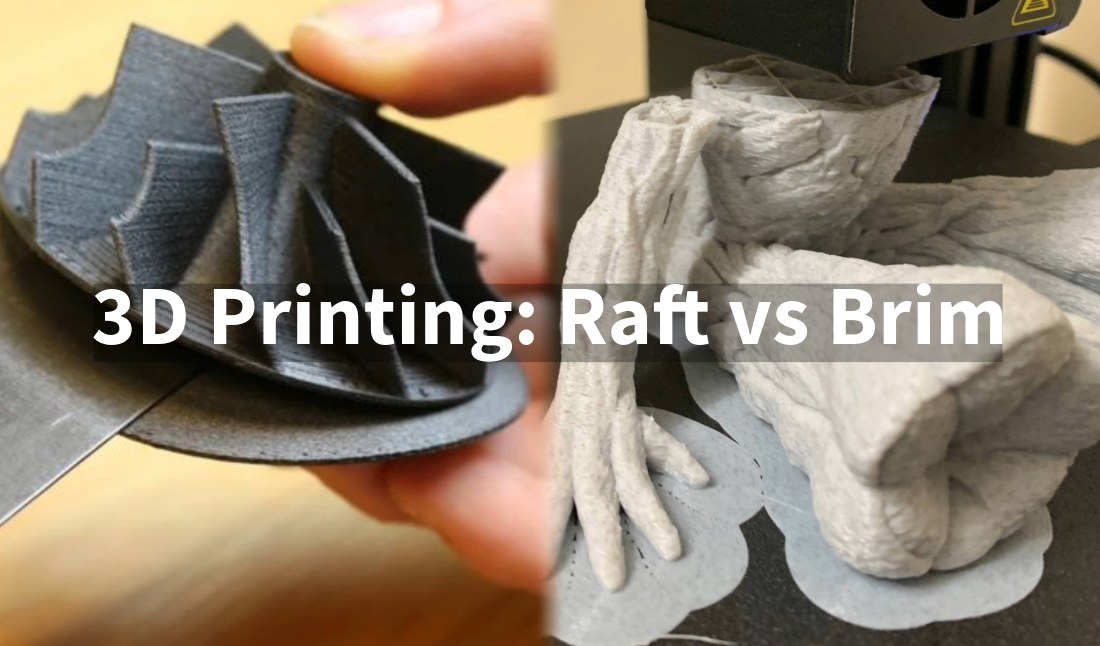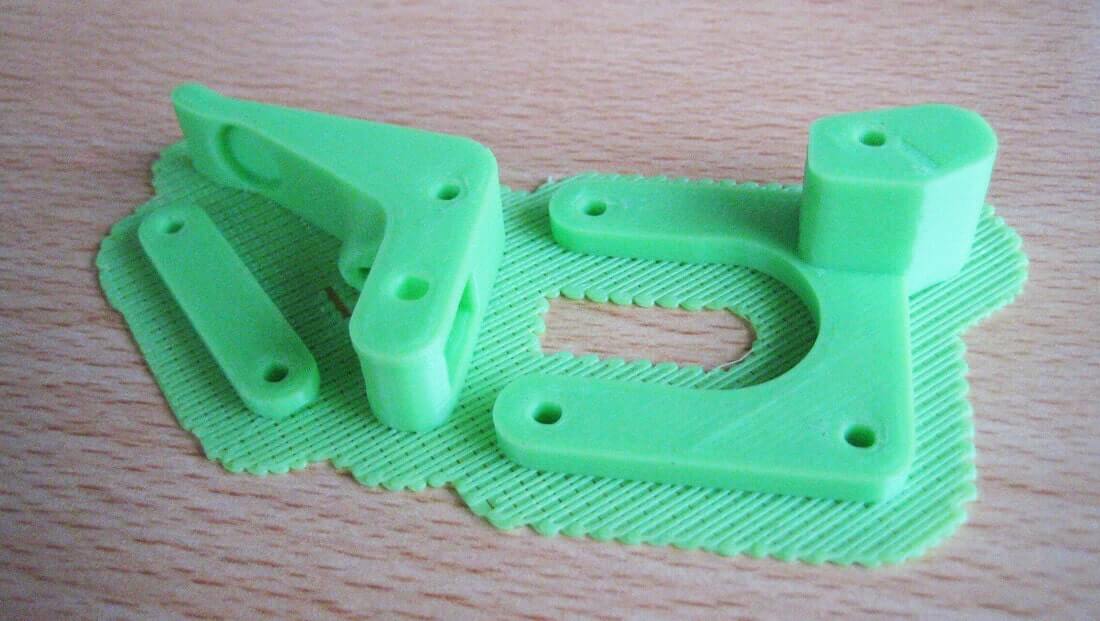3D Printing: Raft vs Brim

Rafts or brims? Learn how to choose the right option for flawless 3D prints. Get actionable tips to optimize your projects with our guide.
Introduction
What are Rafts and Brims?
In 3D printing, rafts and brims are techniques used to help prints stick to the printer's build plate. Both methods aim to improve adhesion, making sure that the printed object stays in place during the entire printing process. This is important because if the object moves or detaches from the plate, the print can fail.
Importance of Choosing the Right Adhesion Method
Choosing the right adhesion method, whether it is a raft or a brim, plays a crucial role in determining the quality of your final print. Using the correct technique helps in minimizing issues like warping or detachment, leading to a more accurate and reliable print. By understanding the differences between rafts and brims, you can make informed decisions about which method works best for your specific 3D printing project.
What is a Raft?
Definition of a Raft
A raft is an extra layer of material that is printed underneath the actual object. It forms a solid base that sticks well to the build plate, which helps to improve the stability of the print. The object is then printed on top of this base layer.
Benefits of Using a Raft
Rafts are particularly useful for increasing adhesion for difficult prints. They can help prevent problems like warping, especially when printing with materials that tend to shrink as they cool, like ABS. A raft also makes it easier to remove the finished object from the build plate without damage.
Common Situations Where a Raft is Used
Rafts are commonly used when printing objects with small contact areas that might not stick well to the build plate. They are also helpful when working with materials prone to warping, or when the bottom layer needs extra support for a successful print.
What is a Brim?
Definition of a Brim
A brim is a layer of material that is printed around the base of the object, similar to the brim of a hat. Unlike a raft, it does not go under the object but extends outward from the edges, helping the object stick better to the build plate.
Benefits of Using a Brim
Brims help increase the surface area of the object that is in contact with the build plate, which improves adhesion. They are particularly useful for reducing warping without using as much extra material as a raft would. Brims are easy to remove and leave little to no marks on the bottom of the print.
Typical Scenarios Where a Brim is Preferred
Brims are often used when printing with materials like PLA, which generally do not need the full support of a raft. They are also useful for objects with corners that may lift off the build plate, as the brim helps keep these corners down during printing.
Raft vs Brim: Key Differences
Factor | Raft | Brim |
|---|---|---|
Adhesion Quality | Rafts provide a stronger base, making them ideal for prints that need extra stability. | Effective for added adhesion |
Ease of Removal | Rafts can be harder to remove and may leave marks on the bottom of the print. | Easier to remove, cleaner bottom |
Material Usage | Rafts use more material compared to brims, which can lead to higher costs and longer print times. | Minimal material used |
Effect on Final Print Quality | Rafts can leave rough marks on the bottom of the print, which may require post-processing. | Less impact on print appearance |
When to Use Raft vs When to Use Brim
Guidelines for Choosing Raft or Brim
Use a Raft When: Printing with materials prone to warping, like ABS, or when the object has a small contact area with the build plate. Rafts are also helpful for objects that need extra support at the base.
Use a Brim When: Printing with materials like PLA that generally adhere well, but need extra help for corners or edges. Brims are also useful for reducing warping without using much extra material.
Examples of Prints that Benefit from Each Method
Raft: Tall, thin objects that are likely to tip over or detach from the plate, and objects made with ABS plastic.

Source: flashforge.com
Brim: Objects with multiple corners that might lift off the build plate, and models made with PLA or PETG.

Source: wevolver.com
Advantages and Disadvantages
Pros and Cons of Using Rafts
Pros: Provides strong adhesion, reduces warping, stabilizes complex prints.
Cons: Uses more material, can be difficult to remove, may leave rough marks on the bottom.
Pros and Cons of Using Brims
Pros: Increases adhesion with minimal material, easy to remove, little impact on print quality.
Cons: Does not provide as much support as a raft, may not be suitable for all types of prints.
Tips for Successful Printing with Rafts and Brims
Level the Build Plate: A properly leveled build plate ensures that both rafts and brims adhere well. Make sure the build plate is clean and at the correct height.
Adjust Slicer Settings: Use appropriate settings in your slicer software to control the thickness and number of layers for rafts and brims. Thicker rafts provide better adhesion but use more material.
Material Selection: Choose the right material based on your print's needs. ABS often requires a raft, while PLA might only need a brim.
Conclusion
Rafts and brims are both useful techniques for improving adhesion in 3D printing. Rafts provide a strong base for prints that need extra stability, while brims are great for reducing warping with minimal material. Understanding the differences helps you choose the best method for each project.
Unionfab's 3D Printing Services
If you want high-quality 3D prints without worrying about adhesion issues, consider using Unionfab's 3D printing services.
We offer professional solutions to ensure your prints come out perfectly every time. Contact us about Unionfab’s services or get your free quote now!


